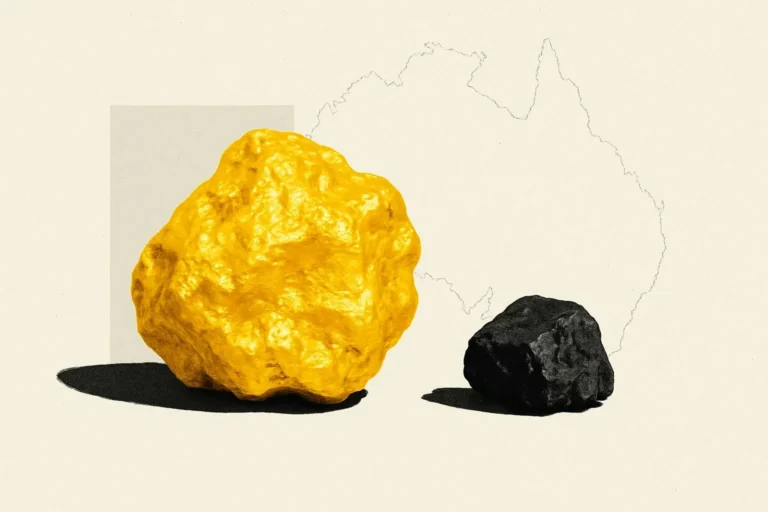Australia is on track for a major shift in its export market. Gold is expected to overtake coal as the country’s top export by 2026. This change reflects shifting global demands and market trends that favor precious metals over fossil fuels.
Government forecasts show gold export earnings could reach A$56 billion in the coming fiscal year. That figure surpasses metallurgical coal, estimated at A$39 billion, and thermal coal at A$28 billion. The trend suggests a continued rise in gold’s role in Australia’s trade future, even if gold prices dip from their current highs.
While coal has long been a dominant force in Australia’s exports, its position is weakening. The global push for cleaner energy is reshaping demand. Countries such as Japan and South Korea are turning to renewable energy. At the same time, China and India are producing more coal at home. These shifts are lowering international coal demand, which has caused prices to slide close to four-year lows.
Meanwhile, gold is gaining attention as a safe-haven asset. Economic uncertainty, inflation fears, and fiscal policy in the United States have all contributed to stronger gold demand. As global markets face instability, investors are moving towards assets like gold, which are seen as more stable in volatile times.
The value of gold is expected to average around $2,825 per ounce by 2026-27. Even with this price drop from current levels, total gold export earnings will likely remain strong. If prices rise to $4,000 per ounce, gold revenue could soar, though still slightly trailing the combined earnings of both coal types.
Australia’s move toward gold reflects a broader shift in global priorities. The push for clean energy, energy independence, and economic diversification is clear. Major economies are acting fast to reduce their reliance on fossil fuels. This transition is changing the way nations trade and invest.
For investors, the trend presents both risks and opportunities. Falling coal prices may hurt companies tied to fossil fuels. At the same time, gold’s rise could drive new investments in mining and resources. It also signals changing investor behavior, as capital flows toward sectors linked with stability and long-term value.
This shift also carries implications for employment, trade policy, and regional economies in Australia. Areas that once relied heavily on coal exports may need support to adapt. The gold mining sector, however, may see growth in jobs and infrastructure.
Australia’s economic future may depend on how well it navigates this transition. Diversifying export earnings and investing in high-value resources like gold could offer a path to resilience. The trend also supports Australia’s position in global markets, as it aligns with efforts to reduce emissions and build more sustainable trade networks.
In the long run, the gold export market may become a symbol of how countries can evolve. While coal has powered economies for decades, the future may shine with more sustainable and stable resources. Australia’s shift signals that change is not only coming but already underway.







